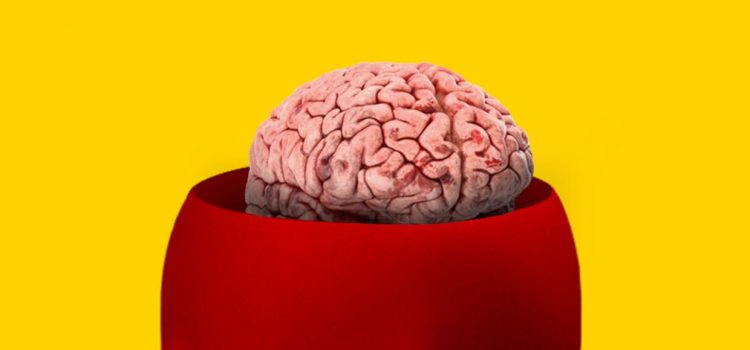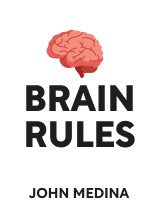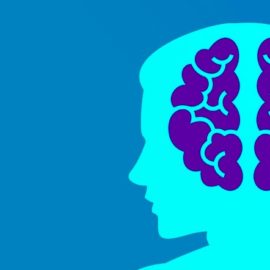

This article is an excerpt from the Shortform book guide to "Brain Rules" by John Medina. Shortform has the world's best summaries and analyses of books you should be reading.
Like this article? Sign up for a free trial here .
What is the book Brain Rules about? What are the 12 rules Dr. John Medina describes in his book?
In the Brain Rules book, Medina lists his 12 rules that help fulfill three core brain functions: solve problems, function in an unpredictable environment, and operate in near-constant motion. These rules can help you understand how brains work so you can improve your learning and thinking.
Here’s a brief overview of the Brain Rules book and its principles.
Rule 1: Our Brains Have Evolved for Survival
Medina explains that our brains evolved in response to changes in both our physical bodies and our environments. Each of these influences led to the development of our unique human abilities.
When we evolved to walk on two legs instead of four, our bodies could send more energy to our brains because walking on two legs is more efficient. In addition, when we adapted to environments ranging from jungles to savannahs and beyond, our brains had to prove flexible enough to respond to the different survival pressures.
Rule 2: Exercise Boosts Brain Function
Medina argues that physical exercise is an essential brain rule; books and mind exercises aren’t the only way to enhance brain power. Our brain function is highly influenced by whether or not we exercise, and more exercise results in more brain power.
According to Medina, our ability and desire to exercise are baked into our biology. Humans had to contend with intense environmental conditions, and the constant motion was necessary for survival. Exercise boosts cognition by increasing blood flow to the brain. When we exercise, our bodies create new blood vessels, which allow blood to circulate more efficiently. This brings more oxygen-rich blood to the brain.
Rule 3: We Need Sleep to Think
Just as we benefit from exercise, we benefit from regular rest: sleep. Sleep is an essential function of the brain which allows us to learn—and when we don’t get enough sleep, our cognitive abilities suffer.
Our sleep, and the quality of that sleep, is determined by biological processes. We’re wired to stay awake and go to sleep in predictable cycles. If these cycles are disrupted, we can get less sleep than we need and our cognition can suffer.
Rule 4: Stress Can Hurt the Brain
The fourth rule of the 12 brain rules argues that stress interferes with our brain’s ability to learn because we haven’t evolved to handle it over a long period of time.
Stress evolved as a survival response since early humans faced several immediate dangers regularly. He argues that people have evolved to manage acute stress well, because this is the type of stress that helps us avoid imminent threats. However, he argues that we haven’t evolved to handle chronic stress well.
Rule 5: Our Brains Are Each Uniquely Wired
Arguably, the heart of the Brain Rules book lies with Medina explaining why each brain is so different because everything is influenced by the science behind the brain. While our brains all fulfill the same basic functions, the neural structure of every brain is unique to every individual. This is why every person has an individual array of talents and skills.
Neurons are the cells that carry out the brain’s functions. They allow the brain to absorb information. Our brains create neural paths—connections between neurons that shape our thoughts and emotions—each time we’re exposed to new things. Because everyone has unique, individual experiences, everyone develops a unique neural network, which means everyone develops their own, individual way of reacting to and understanding the world.
Rule 6: Multitasking Doesn’t Work
The better we’re able to focus on something, the better we’re able to learn it and remember it. This is because when we pay attention to more than one thing—when we multitask—we divert our attention from anyone task over and over again. Each time we divert our attention and then subsequently refocus our attention, we have to reacquaint ourselves with the task—we have to recall where we left off, the details, our plans for our next steps, and so on. This takes an enormous amount of brain power and results in inefficiencies. Thus, by attempting to focus on two tasks at once, you lessen your ability to complete either. Medina advises that you can be more productive and focused, then, by completing one task at a time.
Rule 7: The Brain Needs to Form, Retrieve, and Forget Memories
Medina writes that we can strengthen our memories through repetition, and therefore boost our learning.
Medina primarily focuses on declarative memories, or memories that you have to actively think about to retrieve. Nondeclarative memories are the opposite. (For example, remembering the names of your kindergarten classmates would be declarative memories, while remembering your first name would be a non-declarative memory.)
Rule 8: We Learn Best When Using Multiple Senses
For this rule, Medina contends that using more than one sense at a time improves our learning.
Our brains evolved to absorb and make sense of numerous sources of information at the same time, and have developed that capacity so effectively that they actually work best when doing so. We can see this in the fact that our brains better understand and react to different senses when using more than one:
- When we use one sense, others are automatically activated. For example, when we taste something, we might also imagine we smell it, even if the food item has no actual smell.
- When we use one sense, others are actually improved: For example, when we’re trained to hear a doorbell while simultaneously seeing a flash of light, we’re able to hear the doorbell at lower decibels.
Rule 9: Vision Is the Dominant Sense
The Brain Rules book previously stated that we learn better when using multiple senses at the same time, but there is one sense that overpowers the rest. Vision leads and influences all the other senses, shaping our perception of the world and influencing our learning and memory.
Medina notes that about half of the brain is dedicated to perceiving and interpreting vision. Because it takes up so much more space in the brain than other senses, vision can overrule other sensory input. Thus, if we receive contradictory information from multiple senses, vision tends to win out.
Rule 10: We’re Wired to Respond to Music
Medina argues that playing and listening to music can notably improve cognition. He describes several areas of cognitive function that may be positively affected by participating in or listening to music.
Music leads to improved auditory skills. Medina cites several studies noting that musicians score higher on tests involving identifying subtle differences between sounds—including in speech.
Music leads to improved language skills. Studies show that children who study music see improvements in language skills, both spoken and written.
Music leads to improved social skills. Infants exhibit improved social skills when participating in music, such as increased smiling, laughing, and waving to others.
Music leads to improved emotional skills. According to Medina, studies show that children who played musical games during school have increased empathy for others, as opposed to children who played non-musical games or no games at all. Practiced musicians are also better at detecting emotion in others’ voices.
Rule 11: Gender Affects Thought Processes
The eleventh Brain Rules book rule describes numerous behavioral differences between men and women, which he believes affect social and professional relationships. Some research shows that women and girls are generally better at verbal communication than men and boys. Medina notes that this is likely because women tend to use both hemispheres of the brain when speaking and processing verbal information, whereas men tend to use just one.
Medina also notes several cognitive differences between men and women, which he argues affect both thought processes and cognitive health.
One cognitive difference is that men and women tend to respond to stress differently. Research suggests that, when responding to stress, men focus on the general overview of a situation, while women focus on the details. As a relatable example, women may focus on the details of the brain rules. Book overviews may be what men focus on more.
Rule 12: We Learn by Exploring
For the last brain rule, Medina trains his focus on a particularly important function: exploring, which helps us understand our environments and learn from our experiences. Medina argues that we have an instinctive, strong desire to explore that drives us to learn about the world throughout our lives. He says that this desire is innate, and as such, we can observe this trait even in babies.

———End of Preview———
Like what you just read? Read the rest of the world's best book summary and analysis of John Medina's "Brain Rules" at Shortform .
Here's what you'll find in our full Brain Rules summary :
- An explanation of how the brain works in a simple and accessible way
- The 12 rules that help fulfill the core functions of the brain
- How to improve your thinking and learning abilities






